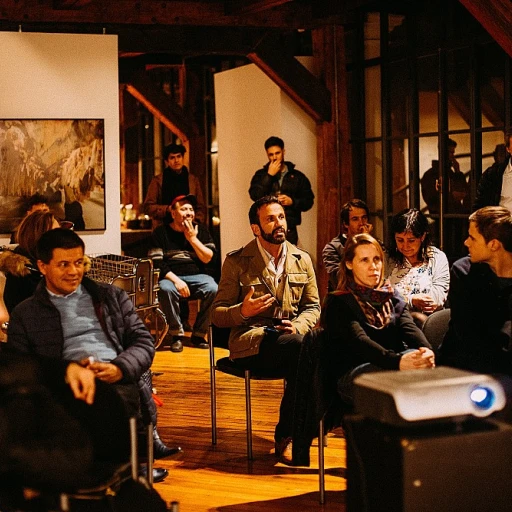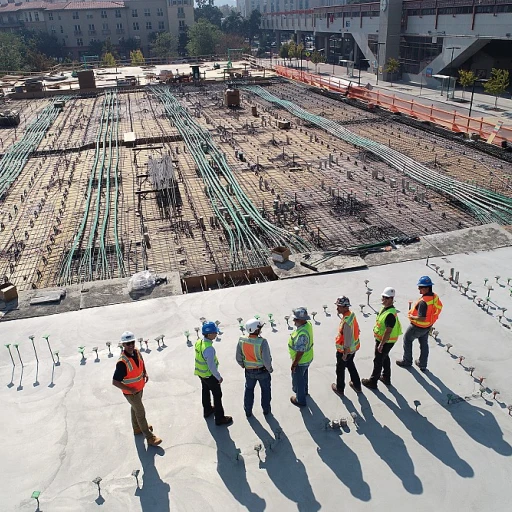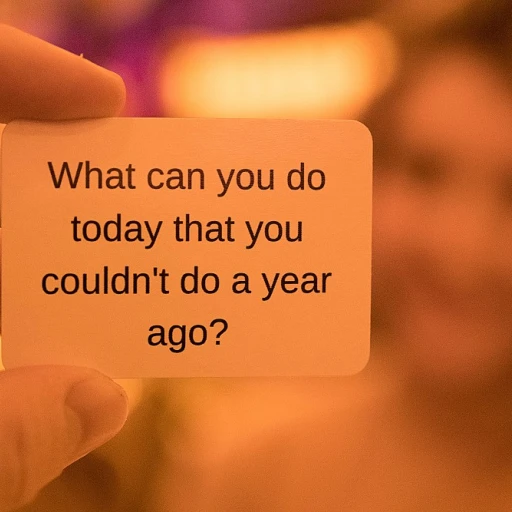
The Rise of Video Conferencing in the Workplace
The Emergence of Video Communication in Modern Workplaces
The transformation of workplace communication has been nothing short of revolutionary, with video conferencing becoming a staple in professional settings. In recent years, the widespread adoption of platforms like Zoom has facilitated virtual meetings across the globe. This shift began as a response to increasing globalization pressures and has now become a norm, especially post-pandemic. Video calls enable people to collaborate seamlessly, breaking geographical barriers and providing flexibility in work schedules. The reasons for this surge are as varied as they are impactful. Organizations have realized the efficiency that virtual meetings bring, from reducing travel expenses to increasing face-to-face interaction, albeit in a virtual manner. Yet, with the rise in video calls, new challenges have surfaced. The constant spotlight of a camera during online sessions can lead to what experts term "appearance dissatisfaction" and contribute to a pervasive sense of fatigue, known as zoom fatigue. Furthermore, the efforts to maintain appropriate body language, eye contact, and manage one's facial appearance become more cognitively demanding. This increased cognitive load, combined with the prolonged hours spent in front of a screen, results in what many recognize as video fatigue. The sensation of being constantly "on-call" can lead to stress and dissatisfaction, impacting productivity and well-being. To better understand the costs and benefits associated with setting up an effective video conferencing environment, examining considerations such as infrastructure investments and potential ROI is critical. For insights on managing the costs of setting up a conducive Zoom room for your organization, you can consult this detailed resource on the costs of setting up a Zoom room.Defining Zoom Fatigue
The Emergence of "Zoom Fatigue" in the Everyday Routine
As the reliance on virtual meetings grows, a new form of exhaustion, often referred to as "Zoom fatigue," has emerged, influencing many aspects of the modern work environment. Recognized as a type of fatigue that arises from prolonged video sessions, it reflects an entirely modern challenge brought about by the increase in remote work and the corresponding jump in video conferencing usage.
In essence, Zoom fatigue can be seen as a blend of physical and psychological strains that stem from continuous interaction via a screen. With the need for constant vigilance to interpret body language and maintain eye contact, there's an increased cognitive effort required. The necessity for impression management, such as paying attention to one's attire or facial appearance during calls, adds an extra layer of stress that distant communication would otherwise not demand.
This phenomenon has drawn attention in discussions around workplace communication. People often find themselves juggling multiple platforms and tools aimed at facilitating mediated communication. However, the technology that was meant to streamline interaction sometimes becomes a burden, adding more checkpoints and demands.
What many do not realize is that video calls necessitate a constant awareness of our own as well as others' facial features. Unlike face-to-face meetings, virtual meetings require attendees to focus intently, often on multiple faces simultaneously. This dynamic can lead to appearance dissatisfaction and stress, plant seeds of dissatisfaction with one's facial appearance, and make users feel like participants in an arduous puzzle – much like finding a crossword clue with multiple interpretations.
The fatigue experienced in these video meetings is due in part to the management features of video platforms themselves. Features like chat, screen sharing, and frequent notifications require simultaneous attention and interaction, promoting feelings of being overwhelmed or "computer mediated" burnout.
Understanding the factors contributing to this modern challenge helps address the growing issue and improve meeting management practices in our ever-evolving digital workplace.
Psychological and Physical Impacts
The Multifaceted Impact on the Human Psyche and Body
Video conferencing, particularly through platforms like Zoom, has brought about significant changes in how we engage in communication and conduct meetings in the workplace. While it has kept people connected in virtual settings, it is not without its downsides, especially when it comes to psychological and physical impacts. One substantial factor is the increased cognitive effort required during video calls. Unlike face-to-face communication, virtual meetings demand more from our brains to process visual cues, often leading to fatigue. This phenomenon is rooted in mediated communication's nature, where eye contact, body language, and facial features are harder to interpret. This discrepancy can cause additional cognitive strain, contributing to a sense of fatigue often referred to as zoom fatigue. Moreover, maintaining one's facial appearance and engagement during video meetings can lead to appearance dissatisfaction. The constant need for impression management, caused by the camera's ever-present lens, puts pressure on individuals to look professional and attentive beyond traditional settings. This can heighten stress and fatigue among employees, as they strive to meet expectations in an environment that magnifies imperfections and impedes natural communication flow. The physical toll of prolonged video conferencing is another concern. The lack of mobility and extended periods of sitting in front of screens can lead to discomfort and physical strain, exacerbating the fatigue modern life already imposes on many workers. To address these challenges, management features in video technology and innovative tools for meeting facilitation are vital. For instance, exploring open-source Q&A management tools can streamline virtual meetings, allowing for smoother interaction and potentially reducing stress. As businesses continue to navigate the future of virtual meetings, recognizing and mitigating the psychological and physical impacts of zoom fatigue will be essential to enhancing well-being and productivity in the workplace.Factors Contributing to Zoom Fatigue
Underlying Causes Leading to Increased Fatigue
The surge in increased fatigue from virtual meetings is a widely acknowledged reality in today's workplaces, driven by various factors associated with videoconferencing. First, there's the undeniable escalation of cognitive effort involved. Individuals engage in constant impression management, as they remain acutely aware of their facial appearance and body language during video calls. This persistent self-awareness can lead to appearance dissatisfaction and stress. Another significant element is the need for sustained and often exaggerated eye contact during virtual engagements. This level of mediated communication demands more mental energy than traditional face-to-face meetings, contributing to cognitive fatigue. Video meetings require participants to be constantly 'on,' leading to more significant brain drain as individuals navigate the lack of non-verbal cues that are naturally present in in-person communication. The technology itself, meant to facilitate communication, can become a source of stress. Unreliable internet connections, software glitches, and unfamiliar management features can disrupt the flow of video conferencing, leaving people stressed and dissatisfied about the effectiveness of the communication. These technical issues, coupled with the misunderstanding of features, further exacerbate exhaustion levels. The structured nature of virtual meetings often lacks the informal, spontaneous interactions found in physical workplaces that provide cognitive breaks. Without these natural pauses, people are left with fewer opportunities to relax their minds, resulting in modern fatigue. Understanding these factors is akin to finding a crossword clue; each element combined forms a comprehensive picture explaining why many experience profound videoconferencing fatigue. Recognizing these contributors is not only essential for alleviating stress but also crucial for the effective management of virtual meetings.Strategies to Mitigate Zoom Fatigue
Effective Strategies for Reducing Video Call Weariness
In the fast-paced world of technology-driven work, video calls have become a staple, bringing with them the modern challenge of fatigue. However, there are strategic measures that individuals and organizations can adopt to mitigate the exhausting impact of hours spent in virtual meetings. Firstly, manage zoom fatigue by reducing the duration and frequency of meetings. Shorter video calls help decrease cognitive load and minimize the stress associated with constant eye contact and impression management. Scheduling regular breaks between video meetings provides some much-needed respite and allows individuals to recharge before re-engaging. Additionally, it’s crucial to establish meeting etiquette rules, which can help reduce cognitive effort and enhance communication. Clear agendas and predefined time limits allow for more structured and effective interactions, decreasing the dissatisfaction linked to unproductive meetings. The choice of platform and its features also plays a significant role. Opt for video conferencing tools with management features like the ability to hide your self-view. This can ease appearance dissatisfaction that arises from continuously seeing oneself on camera, which is a common concern leading to stress. Moreover, encouraging alternate forms of communication, such as emails or instant messaging, can help reduce the number of unnecessary virtual meetings. This approach supports mediated communication without overwhelming employees with constant video calls, thereby alleviating the modern fatigue faced in a technology-heavy workplace. In the broader sense, fostering a workplace culture that emphasizes balance and empathy ensures people feel supported. Management should be proactive in recognizing the stress and dissatisfaction associated with continuous video conferencing, and take steps to address these concerns. Remember, understanding and addressing the factors contributing to zoom fatigue is an ongoing process requiring adaptation and open communication within teams. Implementing these strategies not only enhances the quality of communication but also contributes to a more sustainable and healthy virtual work environment.The Future of Video Conferencing and Work Tech
Adapting to the Evolving Digital Landscape
The reliance on video conferencing in the workplace continues to shape the future of work tech. As we reflect on the various sections of this discussion, it's clear that while technology offers unprecedented convenience and connectivity, it also brings challenges like increased cognitive effort and zoom fatigue.
Looking ahead, technological advancements are expected to focus on mitigating these challenges. Future platforms may incorporate tools to enhance the virtual meeting experience and better mimic face-to-face interactions. Features improving eye contact and impression management by more realistically capturing body language and facial appearance are likely to be high priorities.
Improving Experience and Reducing Stress
Efforts to reduce stress and fatigue from video meetings will continue, encouraging a more sustainable use of video conferencing tools. This includes optimizing management features and user interfaces to decrease the effort needed for effective communication and coordination during virtual meetings. These innovations suggest a bright future where meetings become less of a burden and more of an efficient work tool.
Balancing Technology with Human Needs
As people navigate these modern challenges, organizations should prioritize fostering environments where video technology integrates seamlessly with human needs. This includes acknowledging and addressing feelings of dissatisfaction and appearance dissatisfaction that may arise from prolonged video calls. Acknowledging and addressing these psychological factors is critical for improving overall workplace satisfaction and efficiency.












